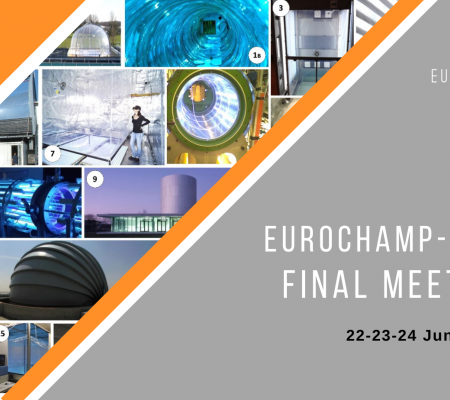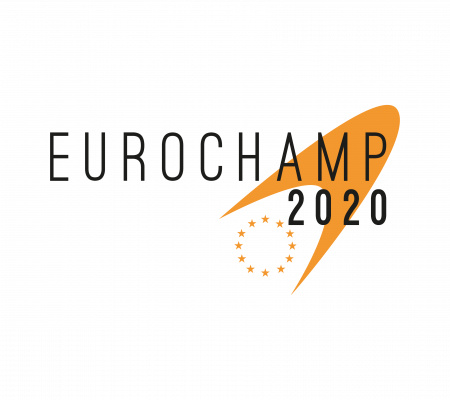| General information | |
| Access mode | Physical access |
| Infrastructure name and acronym | Roland von Glasow Air-Sea-Ice Chamber (RvG-ASIC) |
| Photos |
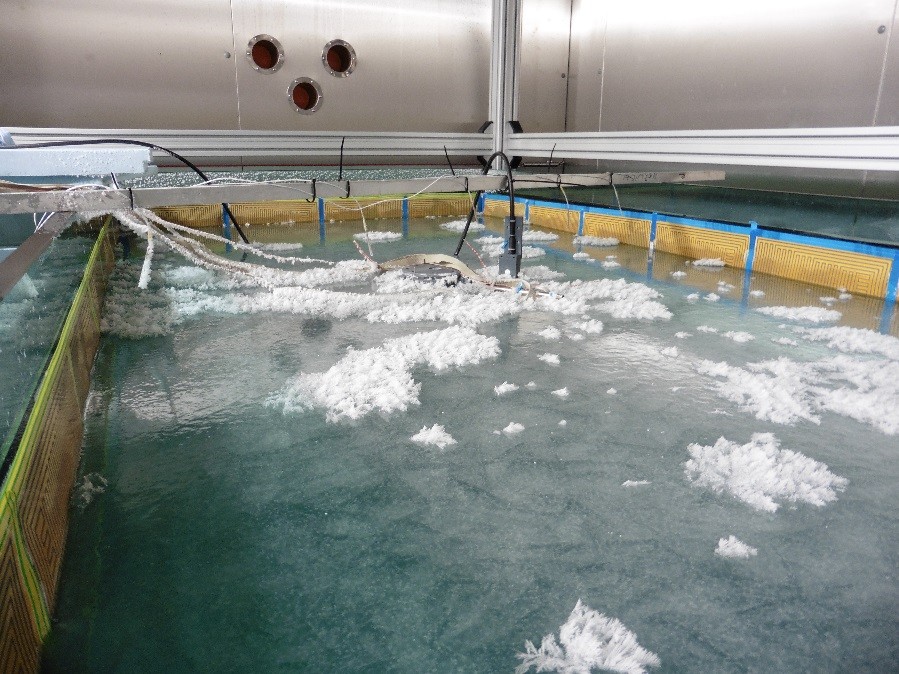 Frost flower fields on artificial sea-ice. The temperature in the facility here is –28°C
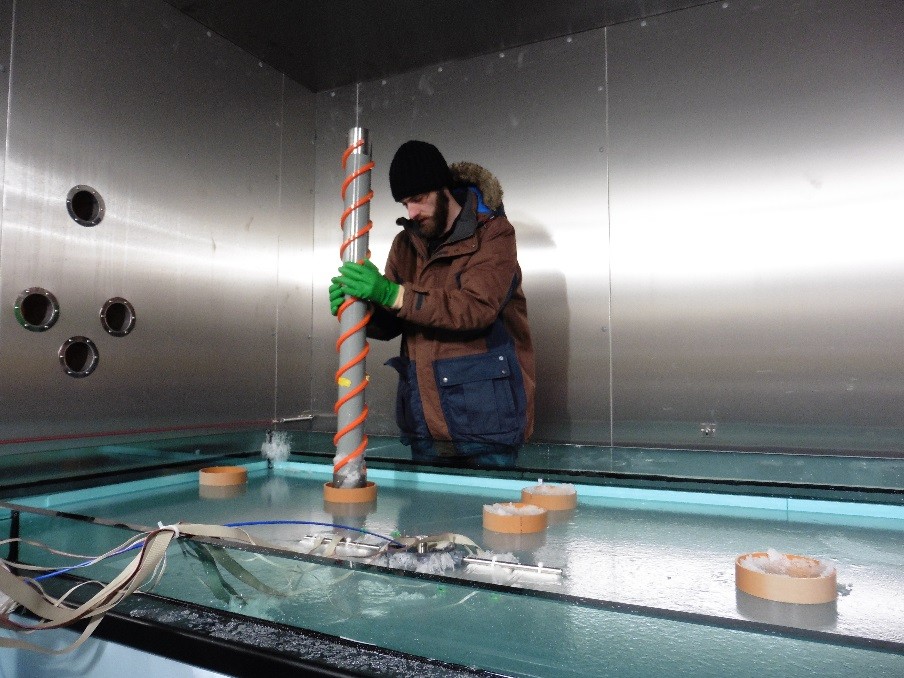 Ice-coring of artificial sea-ice
|
| Location | 52°37’15” N, 1°14’14” E School of Environmental Sciences, University of East Anglia, Norwich, NR4 7TJ, United Kingdom |
| Website | https://www.uea.ac.uk/environmental-sciences/sea-ice-chamber |
| Legal name of organisation operating the infrastructure | University of East Anglia (UEA) |
| Description of the infrastructure | |
| Brief general description of the infrastructure to which access is offered |
The Roland von Glasow Air-Sea-Ice Chamber (RvG-ASIC) facility at the University of East Anglia (UEA) comprises a coupled atmosphere–ocean–sea-ice simulation chamber designed to investigate the role of first-year sea-ice in tropospheric chemistry. The temperature of the chamber can be controlled within the range –55 to +30 °C, with a stability of ±0.3 °C. |
| Services currently offered by the infrastructure and its research environment |
Full access to the RvG-ASIC, including: |
| Modalities of access and support offered under EUROCHAMP-2020 | |
| Typical duration of work |
10 days per experiment, including 3 days for set up and ice-growth, 5 days experiment and 2 days clean-up / packing up / data distribution. Variations may occur, depending on starting conditions required and how much ice is required to be grown. |
| Community/user type served |
RvG-ASIC is mainly used for academic research, but there are opportunities for industrial users / SMEs for sensor and other equipment testing in a variety of extreme polar and ocean simulated conditions, e.g. In / under ice, cold seawater or freshwater, cold atmospheric conditions, under natural lighting conditions or enhanced UV conditions. |
| Scientific and technical support offered | Training for the general use of the facility along with data processing will be provided as needed. Advice on set up / experimental conditions will be offered if requested. Technical and scientific assistance by affiliated researchers within UEA. Data storage and access to data remotely post experiment. |
| Logistic and administrative support offered | Administrative support for ordering chemicals and consumables, logistic support for the management of chemicals. Guest office space. Help with accommodation (available on campus or nearby). |
| Person in charge of access provision at the infrastructure |
Prof. Jan Kaiser, Professor of Biogeochemistry j.kaiser@uea.ac.uk |
| Extended technical information | |
| Physical description | The RvG ASIC is a glass tank construction housed in a predominantly stainless steel environmental chamber. The tank can have a Teflon FEP atmospheric enclosure attached to the top of the tank if the experiment requires. S/V ratio: 4.3 m-1 Pressure range: 950 to 1050 mbar Temperature range for environmental chamber -55 °C to +30 °C. No pressure control. RH range: 20 to 100% Irradiation JNO2 & other J: UV-A (280-340 nm) | 7.4 × 10^(-4) UV-B (320-390nm) | 2.6 × 10^(-4) VIS LED (400-770 nm) | 2.4 × 10^(-5) All | 1.03 × 10^(-3) |
| Mechanical description | 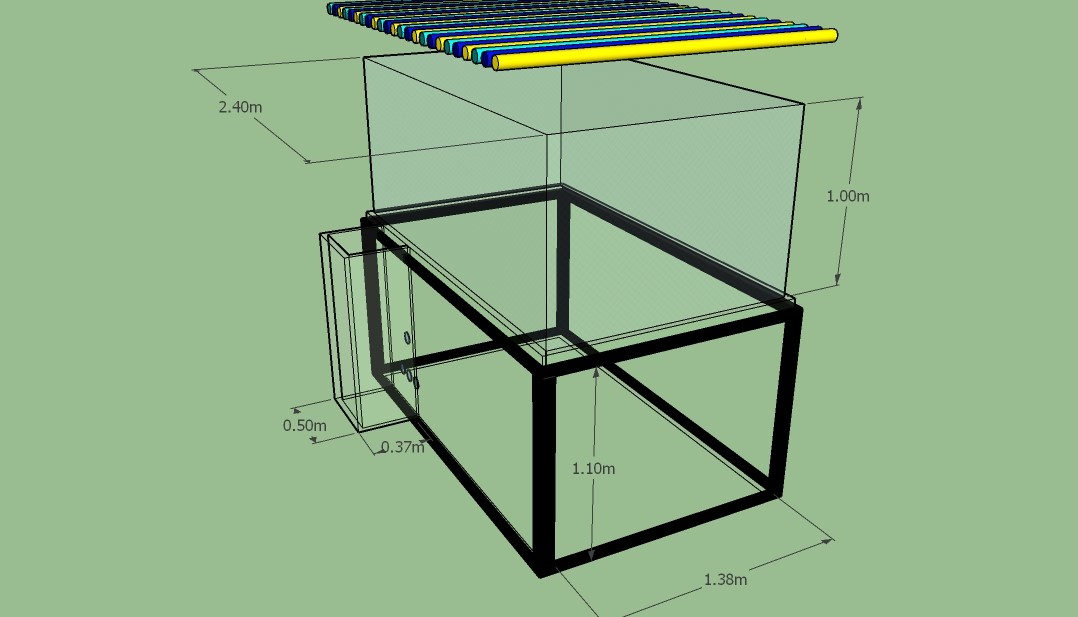 |
| Mechanical description |
Volume: Glass tank, maximum capacity: 3500 litres of water Width: 1.38 m Depth: 1.1 m Length: 2.4 m Maximum atmospheric enclosure size: 1 m x 2.4 m x 1.38 m |
| Auxiliary mechanism |
tank mixing time τ = (4.2±0.1) min coldroom air-exchange time τ = (0.66±0.07) d |
| Irradiation spectra | 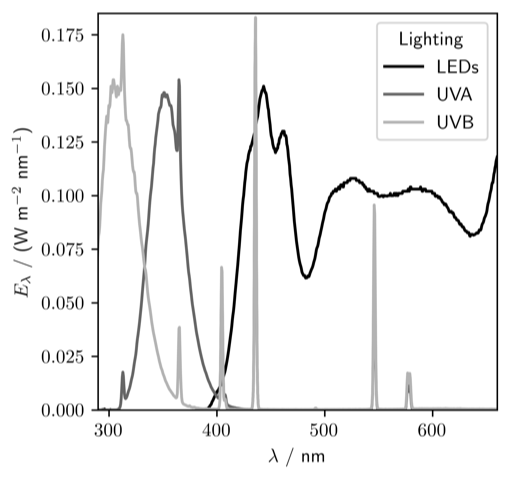 |
| Description paper |
Thomas M, France J, Crabeck O, Hall B, Hof V, Notz D, Rampai T, Riemenschneider L, Tooth OJ, Tranter M, Kaiser J (2021) The Roland von Glasow Air-Sea-Ice Chamber (RvG-ASIC): an experimental facility for studying ocean–sea-ice–atmosphere interactions Atmos Meas Tech 14:1833 10.5194/amt-14-1833-2021. |



